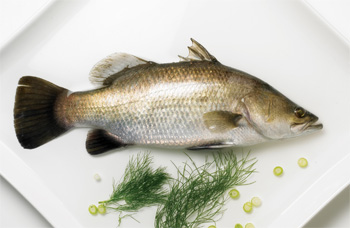 The Atlantic‘s Food Channel has a couple of interesting pieces this week.
The Atlantic‘s Food Channel has a couple of interesting pieces this week.
First off, there’s the story of Whip It, an Austin, TX, convenience store that has morphed into a locavore haven. Philadelphia has seen a real renaissance in local markets catering to conscientious customers—Green Aisle, Milk & Honey, Healthy Bites, Almanac—and it’s interesting to read about how these places create community. I also loved this part:
Listening to Topiwala discuss his admirable business philosophy, one can’t help but wonder: What’s the catch? I mean, isn’t there a cost to putting such noble ideals into practice? Sure enough, there is: money. “We’re not getting rich,” explains Topiwala. “And we’re never going to get rich at this.” Topiwala is perfectly content with this reality. “Everyone wants a mansion,” he says, “when all you need is a house.”
Then there is an article on farming barramundi, a fish I enjoyed quite often on a trip to Australia:
In terms of biological needs, barramundi are the anti-salmon. They are born in the sea and migrate to fresh waters as adults, the reverse of a salmon’s lifecycle. The sluggish rivers they call home are subject to frequent droughts, forcing barramundi to form tight schools in tiny pools left in otherwise dry riverbeds. Huge gills enable them to live in oxygen-deficient water. And best of all, they have the rare ability to transform vegetarian feed into sought-after omega-3 fatty acids. Salmon require as much as three pounds of fish-based feed to put on a pound of meat. Goldman’s barramundi need only a half pound, the bulk of which is made from scraps from a herring processing plant.
And barramundi can be successfully grown in aquaculture tanks, eliminating many of the environmental hazards associated with the open water pens used for salmon and tuna:
Land-locked Australis [a fish farming company] uses what is called a recirculating system. Water is drawn into the facility from wells fed by the nearby Connecticut River. It flows through the fish tanks and then is cleaned in a treatment plant and sent back to the fish. Every gallon Australis uses is recycled 300 times. Solid waste is separated out and goes to local farms as fertilizer.






